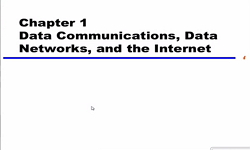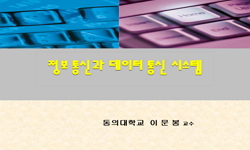The Great Kanto Earthquake was horrible to the point of being called at that time a “truly unprecedented tragedy.” Although the earthquake occurred in Japan, it also had important effects on Korea, a colony of Japan. This was because many Koreans ...
http://chineseinput.net/에서 pinyin(병음)방식으로 중국어를 변환할 수 있습니다.
변환된 중국어를 복사하여 사용하시면 됩니다.
- 中文 을 입력하시려면 zhongwen을 입력하시고 space를누르시면됩니다.
- 北京 을 입력하시려면 beijing을 입력하시고 space를 누르시면 됩니다.

식민지 조선에서관동대지진의 기억과 전승 = The Trends and the Transmission to Korea of the Great Kanto Earthquake in 1923
한글로보기부가정보
다국어 초록 (Multilingual Abstract)
When the earthquake occurred, Japanese Imperialism conversely massacred Koreans in the Kanto area, including Tokyo. As this was just four years after the March First Movement, Japanese Imperialism avoided stimulating the Korean national feeling through this massacre.
Japan thus controlled the press and even clamped down on canards and groundless rumors.
As news of the earthquake became known to Koreans, the domestic press tried to report factual coverage as far as possible, but the massacre was not reported because of the Japanese Government General’s tight control over the press. Meanwhile, relief activities for Koreans residing in Japan were initiated in Korea.
The early relief activities were developed and led by Japanese society and government offices. This was the general dimension of the love for humanity, but Japanese Imperialism desired to use this as part of Korea-Japan harmonization. At the same time, the press became concerned with the relief activities. In Gyeongseong, the Organization for Collection of Subscriptions for Relief and the Organization for Relief for Koreans each was established and relief activities began in earnest.
However, while the Japanese Government General prevented the Organization for Relief for Koreans from being exclusively for Koreans, it supported the Organization for Collection of Subscriptions for Relief, which assisted both Koreans and Japanese, in an unobserved manner.
In major cities such as Gyeongseong, Incheon, Daegu, Busan, and Jeonju, which formed the Japanese society in Korea, the organization for relief was established around Japanese and the government office, which developed relief activities. These relief activities were limited to September of 1923, and in October a memorial ceremony based around religious organization was held in remembrance of the victims.
The Great Kanto Earthquake attracted concern with relief activities and memorial ceremonies at the time, but in 1924 it became a forgotten accident. This was because the Japanese Government General exhaustively controlled the domestic press under the perspective that the earthquake could stimulate the Korean national consciousness. The relief activities centered in government offices brought general love for humanity as a justification, but, in practical terms, this was carried forward as a part of colonial policy based on Korea -Japan harmonization.
The Great Kanto Earthquake was horrible to the point of being called at that time a “truly unprecedented tragedy.” Although the earthquake occurred in Japan, it also had important effects on Korea, a colony of Japan. This was because many Koreans resided in Japan, the mother country.
When the earthquake occurred, Japanese Imperialism conversely massacred Koreans in the Kanto area, including Tokyo. As this was just four years after the March First Movement, Japanese Imperialism avoided stimulating the Korean national feeling through this massacre.
Japan thus controlled the press and even clamped down on canards and groundless rumors.
As news of the earthquake became known to Koreans, the domestic press tried to report factual coverage as far as possible, but the massacre was not reported because of the Japanese Government General’s tight control over the press. Meanwhile, relief activities for Koreans residing in Japan were initiated in Korea.
The early relief activities were developed and led by Japanese society and government offices. This was the general dimension of the love for humanity, but Japanese Imperialism desired to use this as part of Korea-Japan harmonization. At the same time, the press became concerned with the relief activities. In Gyeongseong, the Organization for Collection of Subscriptions for Relief and the Organization for Relief for Koreans each was established and relief activities began in earnest.
However, while the Japanese Government General prevented the Organization for Relief for Koreans from being exclusively for Koreans, it supported the Organization for Collection of Subscriptions for Relief, which assisted both Koreans and Japanese, in an unobserved manner.
In major cities such as Gyeongseong, Incheon, Daegu, Busan, and Jeonju, which formed the Japanese society in Korea, the organization for relief was established around Japanese and the government office, which developed relief activities. These relief activities were limited to September of 1923, and in October a memorial ceremony based around religious organization was held in remembrance of the victims.
The Great Kanto Earthquake attracted concern with relief activities and memorial ceremonies at the time, but in 1924 it became a forgotten accident. This was because the Japanese Government General exhaustively controlled the domestic press under the perspective that the earthquake could stimulate the Korean national consciousness. The relief activities centered in government offices brought general love for humanity as a justification, but, in practical terms, this was carried forward as a part of colonial policy based on Korea -Japan harmonization.
국문 초록 (Abstract)
관동대지진이 식민지 조선에 알려지자 언론은 가능하면 사실적 보도를 하고자 했다. 그러나 조선총독부는 이를 철저하게 통제했다. 이는 일본에서 조선인 학살이 자행되었기 때문이었다. 이로 인해 식민지 조선에는 조선인 학살이10월 중순까지는 전혀 보도되지 못했다. 이러한 가운데 식민지 조선에서는 일본의 조선인을 위한 구제활동을 전개했다. 초기의 구제활동은 일본인사회, 관주도로 전개되었다. 즉 구제활동을 ‘내선융화’라는 식민정책의 일환으로 활용하고자 했기 때문이다. 이와 같은 상황에서 언론은 구제활동을 독려했다. 이에경성에서는 의연금조성회와 조선인구제회가 각각 조직되어 의연금을 모금하는 등 구제활동이 본격화되었다.
경성을 비롯하여 인천, 대구, 부산, 전주 등 일본인사회가 형성된 대도시에서 우선적으로 일본인, 관 중심의 구제회를 조직하는 한편 구제활동을 전개했다. 뿐만 아니라 전국적으로 구제활동을 확산되어 각지에서 다양한 방법으로구제활동을 전개했다. 이러한 구제활동은 대체로 1923년 9월에 한정되었고, 10월에는 희생자를 위한 추모행사가 종교단체를 중심으로 이루어지기도 했다.
관동대지진은 당시에는 국내에서 구제활동과 추모행사 등 많은 관심을 가졌지만, 1년 후인 1924년부터는 사실상 잊혀진 사건이 되었다. 이러한 점은 식민지 모국과 달리 민족의식을 고취시킬 수 있다는 인식 아래 일제의 통제에서비롯되었다.
관동대지진은 당시 ‘實로 空前한 慘劇’이라고 할 정도로 참혹했다. 식민지 모국에서 일어난 지진임에도 불구하고 관동대지진은 식민지 조선에도 적지 않은영향을 미쳤다. 일제는 관동대...
관동대지진은 당시 ‘實로 空前한 慘劇’이라고 할 정도로 참혹했다. 식민지 모국에서 일어난 지진임에도 불구하고 관동대지진은 식민지 조선에도 적지 않은영향을 미쳤다. 일제는 관동대지진이 발생하자 이를 역이용하여 도쿄를 비롯한 관동 일대에서 조선인을 학살했다. 이러한 조선인 학살사건은 3·1운동이일어난 지 불과 4년밖에 되지 않았기 때문에 민족적 감정이 최대한 드러나지않도록 했다.
관동대지진이 식민지 조선에 알려지자 언론은 가능하면 사실적 보도를 하고자 했다. 그러나 조선총독부는 이를 철저하게 통제했다. 이는 일본에서 조선인 학살이 자행되었기 때문이었다. 이로 인해 식민지 조선에는 조선인 학살이10월 중순까지는 전혀 보도되지 못했다. 이러한 가운데 식민지 조선에서는 일본의 조선인을 위한 구제활동을 전개했다. 초기의 구제활동은 일본인사회, 관주도로 전개되었다. 즉 구제활동을 ‘내선융화’라는 식민정책의 일환으로 활용하고자 했기 때문이다. 이와 같은 상황에서 언론은 구제활동을 독려했다. 이에경성에서는 의연금조성회와 조선인구제회가 각각 조직되어 의연금을 모금하는 등 구제활동이 본격화되었다.
경성을 비롯하여 인천, 대구, 부산, 전주 등 일본인사회가 형성된 대도시에서 우선적으로 일본인, 관 중심의 구제회를 조직하는 한편 구제활동을 전개했다. 뿐만 아니라 전국적으로 구제활동을 확산되어 각지에서 다양한 방법으로구제활동을 전개했다. 이러한 구제활동은 대체로 1923년 9월에 한정되었고, 10월에는 희생자를 위한 추모행사가 종교단체를 중심으로 이루어지기도 했다.
관동대지진은 당시에는 국내에서 구제활동과 추모행사 등 많은 관심을 가졌지만, 1년 후인 1924년부터는 사실상 잊혀진 사건이 되었다. 이러한 점은 식민지 모국과 달리 민족의식을 고취시킬 수 있다는 인식 아래 일제의 통제에서비롯되었다.
참고문헌 (Reference)
1 "조선일보"
2 이연, "일제강점기 조선언론통제사" 박영사 2013
3 "시대일보"
4 "삼천리"
5 "매일신보"
6 "동아일보"
7 "국민보"
8 강덕상, "관동대지진과 조선인 학살" 동북아역사재단 2013
9 노주은, "관동대지진과 일본의 재일조선인 정책 : 일본정부와 조선총독부의 '진재처리' 과정을 중심으로" 연세대학교 대학원 2007
10 강덕상, "관동대지진 조선인 학살을 보는 새로운 시각-일본측의 ‘3대 테러사건’사관의 오류" 역사문제연구소 47 : 1999
1 "조선일보"
2 이연, "일제강점기 조선언론통제사" 박영사 2013
3 "시대일보"
4 "삼천리"
5 "매일신보"
6 "동아일보"
7 "국민보"
8 강덕상, "관동대지진과 조선인 학살" 동북아역사재단 2013
9 노주은, "관동대지진과 일본의 재일조선인 정책 : 일본정부와 조선총독부의 '진재처리' 과정을 중심으로" 연세대학교 대학원 2007
10 강덕상, "관동대지진 조선인 학살을 보는 새로운 시각-일본측의 ‘3대 테러사건’사관의 오류" 역사문제연구소 47 : 1999
11 야마다 쇼지, "관동대지진 조선인 학살에 대한 일본국가와 민중의 책임" 논형 2008
12 강덕상, "1923년 관동대지진(關東大地震) 대학살 진당" 역사문제연구소 45 : 1998
13 김인덕, "1920년대 이후 일본·동남아시아지역 민족운동" 한국독립운동사편찬위원회 2008
동일학술지(권/호) 다른 논문
-
1950, 1960년대 타이완문학의 경향과 미국원조문화와의 상관성
- 동북아역사재단
- 최말순
- 2015
- KCI등재
-
1930년대 재만조선인, 이등국민론의 비판적 성찰 - 교육정치사의 관점과 사례를 중심으로 -
- 동북아역사재단
- 정안기
- 2015
- KCI등재
-
관동대지진 조선인 학살 연구의 과제와 전망 - 일본에서의 연구를 중심으로 -
- 동북아역사재단
- 다나카 마사타카
- 2015
- KCI등재
-
한일 청구권협정 제2조의형성 과정(1965. 3~6) 분석 - 개인청구권 문제를 중심으로 -
- 동북아역사재단
- 장박진
- 2015
- KCI등재
분석정보
인용정보 인용지수 설명보기
학술지 이력
| 연월일 | 이력구분 | 이력상세 | 등재구분 |
|---|---|---|---|
| 2026 | 평가예정 | 재인증평가 신청대상 (재인증) | |
| 2020-01-01 | 평가 | 등재학술지 유지 (재인증) |  |
| 2017-01-01 | 평가 | 등재학술지 유지 (계속평가) |  |
| 2013-01-01 | 평가 | 등재학술지 유지 (등재유지) |  |
| 2010-01-01 | 평가 | 등재학술지 선정 (등재후보2차) |  |
| 2009-01-01 | 평가 | 등재후보 1차 PASS (등재후보1차) |  |
| 2007-01-01 | 평가 | 등재후보학술지 선정 (신규평가) |  |
학술지 인용정보
| 기준연도 | WOS-KCI 통합IF(2년) | KCIF(2년) | KCIF(3년) |
|---|---|---|---|
| 2016 | 1.18 | 1.18 | 1.19 |
| KCIF(4년) | KCIF(5년) | 중심성지수(3년) | 즉시성지수 |
| 1.06 | 0.98 | 2.155 | 0.1 |




 KCI
KCI






